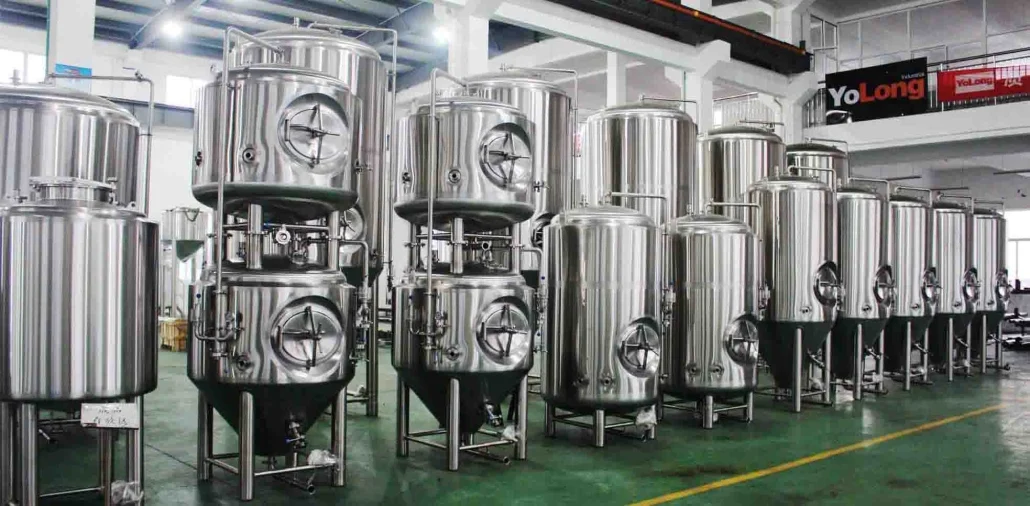Attention all beer enthusiasts and aspiring brewers! Have you ever dreamed of creating your own delicious, hoppy brew that could rival the best craft beers out there? Well, it’s time to turn that dream into a reality with the right microbrewery equipment. Whether you’re starting up a small-scale operation or expanding an existing brewery, having the essential tools at your disposal can make all the difference in crafting the perfect beer. So grab a cold one and read on as we break down everything you need to know about Microbrewery equipment. Cheers!
What is a Microbrewery?
A microbrewery is a small brewery that produces beer in limited quantities. It is not to be confused with a macrobrewery, which is a larger brewery that produces beer in greater quantities. A microbrewery typically produces fewer than 25,000 barrels of beer annually. Some microbreweries produce as few as 1,000 barrels annually. Microbreweries are becoming more popular because they offer a unique experience for beer lovers.
Breweries producing under 6 million gallons (23 million liters) per year are consideredmicro breweries. There are now over 2,000 micro breweries throughout the United States. The majority of these breweries are located in the Northeast and West Coast regions of the country. Many smaller towns in America have their own micro brewery.
To start a micro brewery, you will need to obtain a brewing license from your state’s Alcohol and Tobacco Control Board (ATCB). You will also need to purchase or lease the necessary brewing equipment, including a brewhouse, fermenters, tanks, and pumps. You will also need to hire a brewer and make sure he or she has the proper training and certification. Once everything is set up, you will need to begin brewing beers that appeal to local consumers.
Brewing beer is an exact science, and there are certain steps that must be followed each time you brew a batch of beer. Not following these steps can result in poor-quality beers that no one will want to drink. The following are six key
What is in a Microbrewery?
A microbrewery is a small brewery that produces beer mainly for local consumption. These breweries can range from just a few hundred barrels of production to well over a thousand barrels. There are many different types of microbreweries, including those that produce traditional ale, lager, porter, stout, and IPA.
Brewing beer at home is a great way to learn about the craft of brewing. However, in order to produce quality beer, you will need some essential equipment. Here are the most important items for a microbrewery:
-An all-grain brewing system: This is the heart of the brewery and contains all of the necessary ingredients and hardware needed to create beer. All-grain brewers use malt extract to produce wort(the liquid precursor to beer), which results in a more complex flavor and body than using malt alone. An all-grain brewing system can be expensive, but it’s worth it if you want to produce high-quality beer.
-A mash tun: A mash tun is used to convert starches into sugars during the brewing process. The sugars are then converted into alcohol by yeast. It’s important to use fresh malts for mashing because old malts can start to break down and create harsh flavors in your final beer.
-A brew kettle: The brew kettle heats water up so that it can be used to boil wort. This process extracts hop bitterness and other flavor elements from the hops used in the
The Equipment Used in a Microbrewery
Brewing beer is a complex and time-consuming process that requires the use of specialized equipment. In a typical microbrewery, the following equipment is used to create beer:
1. Brewery boiler: This large, metal vessel is used to heat water and ferment the beer. The brewery boiler can be made from many different materials, such as copper or steel, but all boilers have a similar design. The main part of the boiler is called the steam generator and it contains coils of metal that heat up water when it’s turned on. This heats up the wort, which is then transferred to the brew kettle.
2. Brew kettle: This large pot is filled with hot water and placed on top of the brewery boiler. The wort, which is made up of water and malt, is poured into the brew kettle and boiled for about an hour. During this process, hops are added to give the beer its characteristic flavor and aroma.
3. Fermentation tank: This large tank stores yeast during fermentation, which converts sugar into alcohol and carbon dioxide gas. Yeast needs oxygen in order to work properly, so a pump sends air through the fermentation tank until it reaches a certain level of saturation. When this happens, bacteria will start to grow and transform sugar into alcohol and carbon dioxide gas.
4. Cooling system: After brewing has been completed, the beer must be cooled quickly so that it can be stored without spoiling.
Brewing Processes
In order to brew beer, you’ll need four essential pieces of equipment: a mash tun, a water filter, a brewing kettle, and an fermentation chamber. Here’s how each one works:
The Mash Tun
Mash tuns are used to convert grains into fermentable sugars by breaking down the starches into glucose and maltose molecules. The most common type of mash tun is the two-tier system, which has a bottom layer of crushed grains that rests on a bed of hot water. The heat cooks the grains and extracts their natural sugars. After being cooked for a certain amount of time, usually around 60 minutes, the liquid is drained off and transferred to the brewing kettle.
The Water Filter
A water filter removes impurities from tap water before it enters your brewing system. There are many different types of filters, but the most common ones are called sand and carbon filters. Sand filters trap large particles such as dirt while carbon filters remove dissolved minerals like calcium and chlorine from the water. A good quality water filter will also remove any harmful metals or chemicals that may be in the tap water.
The Brewing Kettle
Brewing kettles are used to heat up water to boiling point so that it can be used to create beer using hops as well as other ingredients like malt. Most brewing kettles come with at least one thermometer so you can keep an eye on the temperature while you’re brewing. Be sure
How to Brew Beer
If you’re interested in brewing your own beer, there are a few essential pieces of equipment you’ll need. At the very least, you’ll need a pot or kettle to boil water in and a fermenter to hold the beer during fermentation. Here’s a look at some of the other essential gear:
-A thermometer to monitor the temperature of your wort and beer
-An airlock to ensure that your beer is carbonated and sealed off from oxygen
-Bottles or cans to store your finished beer
Here are some helpful tips for brewing great beers:
1. Make sure your water is cold before starting to brew. This will help improve the quality of your beer. Boil water before adding it to your brewpot.
2. Use a light malt flavor in your beer. This will give it a smooth flavor and allow the hops to shine through more clearly. Pale malts work well for this purpose.
3. Be aware of the bitterness levels of different hops varieties. Some are more bitter than others, so be sure to adjust the amount used accordingly. Avoid using extreme bitter hop varieties if you can; they can overpower other flavors in your beer.
4. Brew slowly and steadily over time if you want consistent results. Brewing too quickly can lead to inconsistencies in flavor and color in your final product
Conclusion
If you’re interested in brewing your own beer, it’s important to have the right equipment. In this article, we’ll take a look at some of the essential microbrewery equipment that you’ll need to get started. From mashing tanks and boilers to fermenters and bottling systems, make sure you have everything you need to start crafting delicious craft beers. Be sure to read our guide before starting out so that you know exactly what you’re getting yourself into!


